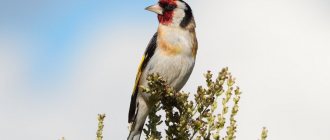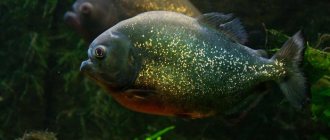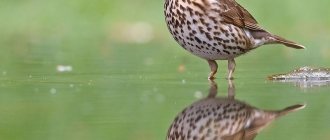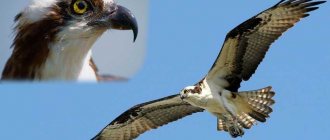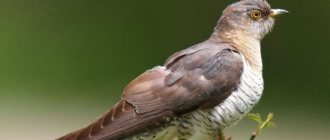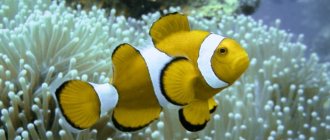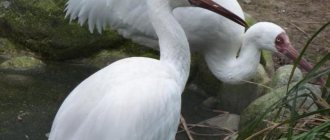The Djungarian hamster is one of the most popular types of domestic hamsters in Europe and Asia (Americans keep them quite rarely). The international name is Sungur (Phodopus sungorus). The name “Dzungarian” itself comes from the name of the region in China.
The rodent belongs to the family of hamsters, the genus of hairy legs. The genus was named so because of the vegetation on the “feet” of the dzhungarik.
They live in Western Siberia, Mongolia, Kazakhstan, and northwestern China, from where they were brought to almost all countries of the continent.
Classic coloring of dzhungarika.
Description of the Djungarian hamster
Having seen a photo of Djungarian hamsters, you immediately want to go to the pet store and bring home a couple of furry pets. It is difficult to answer the question of where exactly these furry animals appeared. Therefore, any country of residence can be considered their homeland. And today they live in Siberia, Asia and Kazakhstan.
The Djungarian hamster is a beautiful miniature rodent whose weight does not exceed 70 g. As for the average indicators, the weight of the Djungarian hamster ranges from 40-45 g. The height of the fluffy rodent does not exceed 10 cm. The average is 4-6 cm. This breed belongs to dwarf hamsters and easily fits even in a child's palm.
The jungarik has a short, neat body. On a small head, small ears are set quite close to each other. On the short muzzle, dark, bulging eyes are set quite far apart from each other. Small paws are covered with hair. If the Djungarian hamster is sitting, it is impossible to see the tail. A short tail is another feature of this breed of hamster.
A special feature of Djungarian hamsters is the presence of a dark stripe along the line of the spine. Other dwarf hamster breeds do not have such a stripe. The fur is fluffy, but not long. Regardless of the main color, the fur on the belly of rodents is colored white and cream. The border between the color of the back and belly is quite clearly visible.
The lifespan of rodents is 2-3 years. With proper care and proper nutrition, miniature rodents can live up to 4 years. As for how long miniature animals live in nature, they do not even live to be 2 years old.
An interesting fact is that these furry pets see everything in black and white.
Character
The description of a furry animal will not be complete without talking about its character. The Djungarian hamster is a thrifty animal. Living in the wild, he must stock up on provisions for the winter. And, despite the fact that domestic rodents do not have such a need, at every opportunity they begin to collect bags in their cheeks of everything that comes to hand. These are not always edible things. Therefore, while walking around the apartment, you need to keep an eye on your Djungarian hamster.
Djungarian hamsters are friendly and love children. They happily sleep on a person's lap or in his arms, and even allow him to put clothes on them. But the dzhungarik must live alone in a cage. He is aggressive towards other hamsters. If the pet does not live alone, it will begin to conquer the territory, which will lead to permanent injuries to the pets. To prevent them from injuring each other, do not put them in the same cage.
Despite the miniature size of the Djungarian hamster, he is not afraid to defend himself if he senses danger. And, due to their small size, Djungarians are afraid of almost everything. Therefore, it is worth creating the most comfortable conditions for your pet. Explain to children that they should play with the furry rodent carefully. Djungarian hamsters do not show aggression without reason.
Eating in a natural environment
Hamsters in the wild store food in their burrows, and they carry food in their developed cheek pouches.
What constitutes the basis of the diet of dzhungariks in natural conditions?
- Seeds.
- Green plants.
This set is considered the main part of a hamster's food supply. But dungarians feed not only on plant food; rodents also feed on some insects. These are mainly caterpillars and larvae - the main source of protein for hamsters.
In winter, Djungarian hamsters will not survive without reserves, so the approach of winter is characterized by active seed procurement.
Types of hamsters
If we talk about the varieties of Djungarian hamsters, then color is taken as the basis for the classification. Djungarian hamsters come in the following colors:
- grey;
- tangerine (light red);
- pearls (white);
- sapphire (gray-blue).
The natural color is considered gray. Other colors, including sapphire and black, are obtained artificially. There are also colorful rodents. Some of them have longitudinal or transverse stripes on their backs. But colored or striped jungaris are rare. The rarest is the pearl color. Accordingly, the price of white rodents is somewhat inflated. Black rodents are also expensive compared to others, being no less rare than white ones. A special feature of the albino dzhungarik is the red color of its eyes. In general, rodents cost about $10.
Breeding these rodents must be done carefully. While gray domestic hamsters can be safely crossed with rodents of any color, tangerine hamsters cannot be crossed with each other. Their offspring are not viable. It is also worth noting that rodents of unusual colors are more susceptible to various diseases and less resistant to stress.
An interesting fact is that Djungarian hamsters molt in nature before winter. During shedding, the coat becomes lighter. But rodents that live in apartments almost never shed. Junariks are susceptible to molting if the air temperature drops below 16 degrees.
Gray color is the most common
Where do Djungarian hamsters live in the wild?
The homeland of the animal is Asia, Siberia, Kazakhstan. In their natural habitat, Djungarians prefer to settle in deserts, dry steppes, and less often in forest-steppes. Therefore, Djungarian hamsters can be found in eastern Kazakhstan, North-East China and Mongolia.
The habitat of Djungarian hamsters in Russia is Western Siberia, areas of southern Transbaikalia, Tuva, in the Minusinsk, Aginsk and Chui steppes. It is also found in the Altai Mountains at an altitude of 2 to 4 thousand meters above sea level. Hamsters prefer to settle in undeveloped territories, but they are also tolerant of being close to people.
The home of Djungarian hamsters is underground burrows, the depth of which can reach 1 meter. It can be used to distinguish the sex and age of the jungar. In young males they are small and shallow, in females they are much larger, in adult and strong males they are the largest. The burrows of Djungarian hamsters have a large number of branches, several holes and chambers, which are used for storage rooms, bedrooms and latrines.
Contents of dzhungariks
The Djungarian hamster is generally unpretentious. The first purchase you will have to make is a cage. Due to its small size, you won’t have to purchase a huge cage. But we should not forget that Djungarian hamsters are active rodents. Experts recommend keeping your pet in a cage 30 cm wide and 50 cm long. The recommended cage height is 40-45 cm. If possible, it is better to buy a two-story house for your pet, in which it will be more comfortable to live. Aquariums are not recommended for keeping animals. They lack normal air circulation.
Since Djungarian hamsters sleep during the day, the cage must be equipped with a house. It can be purchased at a pet store, or you can make it from an unnecessary box. Sometimes rodents build their own sleeping place. But, the pet needs to put building material (small twigs, sawdust and pieces of fabric) into the cage. Before putting dry branches into the cage, treat them with boiling water. Otherwise, various bugs may get into the cage along with the branches. Removing insects will not be easy, and some of them can harm your furry pet.
It is important to choose the right location for the cage. Small rodents are shy, so there should be no source of noise nearby. The brightest place in the house will not do either. Choose a remote area where your pet will feel safe and at the same time it will not be difficult for you to keep an eye on him.
Cage equipment
We supply the cage with attractions for your furry pet. There is a large selection of toys for rodents on sale. Be sure to install a wheel whose dimensions correspond to the miniature size of the pet (about 16 cm). In addition to the wheel, you should equip your pet's house with tunnels and wooden branches on which he can climb. You can put a hammock and various ladders.
The cage for Djungarian hamsters should have a feeder and water bowl. There are different models of drinkers and feeders in stores. They differ in the material from which they are made. It is better to choose a ceramic feeder. It is heavy and your pet will not turn it over. As for the drinking bowl, it is better to opt for a model that is attached to the wall of the cage. We change the water in the drinking bowl daily. Since the natural habitat of rodents is the desert, Djungarian hamsters do not drink often. It is not necessary to fill the drinker full.
Well, the last thing worth purchasing is a bathtub. Rodents do not swim, and water treatments are contraindicated for Djungarian hamsters. But in a sand bath he enjoys cleaning his fur.
If you're traveling, you'll also need a carrier.
Make sure you have a hiding place where your furry pet can hide supplies, because the instinct to stock up on food has not disappeared in domesticated animals.
Caring for dwarfs
Caring for a Djungarian hamster comes down to keeping the cage clean and feeding the furry pet. The rodent takes care of its own hygiene, so you don’t have to keep its coat clean. It is noteworthy that even living in a hole, the small rodent manages to remain clean. If the pet has gotten pretty dirty somewhere and cannot clean its coat itself, then carefully clean its fur with a piece of soft cloth.
To ensure that your Djungarian hamster does not have health problems, we clean the cage at least once a week. It involves a complete replacement of the filler with which the bottom of the cage is laid. Cotton wool cannot be used as a filler. An omnivorous pet will eat it, which will cause disruption of the gastrointestinal tract. It is advisable to use special fillers that are sold in pet stores. An alternative to store-bought filler is sawdust. In addition, sawdust, as bedding, absorbs odors. Therefore, you will be able to clean the cage less often.
Every month a general cleaning is carried out, during which the pet’s house is washed with disinfectants. The pet itself is temporarily moved to an aquarium or some kind of box. Not only the cage, but also all its contents should be treated with detergents: toys, a house for the night, a feeding trough, a drinking bowl. It is advisable to replace wooden sticks and twigs with new ones. We wait until the cage dries and cover it with a new layer of sawdust, after which we place the furry friend back.
You can't feed your pets all the time
Nutrition
Caring for Djungarian hamsters involves organizing food. It is important not only to choose the right diet, but also to adhere to a certain schedule. The Djungarian hamster is fed no more than 3 times a day. For an adult pet, two meals a day are enough. If we are talking about a hamster that is expecting offspring, then it needs to be fed 1 time more. We give food to pets at the same time. We do not add feed for future use. Thrifty pets will simply transfer leftover food from the feeder to the hiding place.
The main food for the Djungarian hamster is a mixture of cereals and legumes. You can make a similar mixture at home with your own hands. It must contain oats, corn, various nuts, and seeds. You can purchase this mixture at a pet store. But pets do not always like the food of a particular brand. To determine which brand of food your furry friend will like, you will have to spend time and money. Before purchasing a ready-made mixture, read its description. Opt for high-quality food that contains only natural ingredients.
Vitamin feed and protein food
In addition to dry food, you should pamper your Djungarian hamster with vitamin food. Be sure to include greens in your diet. Experts recommend giving parsley, dill, clover and young plantain leaves. Vitamin foods also include vegetables and fruits. The fluffy pet eats everything. But this does not mean that all products are useful for him. The list of prohibited fruits and vegetables includes all citrus fruits, kiwi, potatoes, pomegranate, and melon. You should choose apples, grapes, apricots, plums and berries. To prevent anything from happening to the dzhungarik, it is prohibited to give fruits and vegetables treated with pesticides.
Twice a week we give our pets protein food (boiled chicken breast, quail egg white or fatty fish). We do not season the meat with salt or pepper, because wild rodents do not season their food with spices. Accordingly, the structure of their body is such that they do not need salt or pepper.
From time to time it is worth pampering your pet with treats that he eats with pleasure. You can purchase such treats at a pet store, or you can prepare them yourself. These can be fruit candies sprinkled with chopped nuts or muesli.
Harmful products
Dzungarik does not digest starch well. Therefore, all foods that are rich in this substance should not be included in the diet. And a lot of natural starch is found in bananas and potatoes. Occasionally, you can pamper your furry pet, who eats bananas with pleasure, with this delicacy. But only in terms of encouragement.
Sugar-rich foods are also prohibited. According to all the studies on Djungarian hamsters, they are prone to diabetes. Therefore, giving them any sweets is dangerous. Chocolate and any cookies, fruits with a high fructose content (watermelon, for example) are prohibited.
Bakery products are also hard on the stomach. It is better to pamper your pet with oatmeal cookies or mixed berries.
It is advisable that this information is always in front of your eyes at first. Keep an eye on your pet during walks. To avoid problems, you must know what he eats.
Anatomy of the Syrian hamster
One of the main features of this type of hamster is the presence of cheek pouches designed for carrying food to the place of residence, while the mass of food carried can reach 18 grams, and the size of the head can double in size - these are the capacious pouches.
Hamster jaws consist of self-sharpening incisors for obtaining and molars for chewing food. It should be noted that self-sharpening incisors are constantly growing, so it is necessary to provide the hamster with hard objects when keeping it at home - branches, unpainted wood or a special mineral stone.
The stomach of hamsters consists of two sections: the first section is responsible for softening food before it enters the second section, and the last section is responsible for digesting food and pushing it into the intestines.
The sex of a hamster is determined by the distance from the anus to the genitals: for males this distance is from 1 to 1.5 cm, and for females it is an order of magnitude smaller, the distance is practically not noticeable.
Reproduction
Correct conditions for reproduction
If you decide to breed mini rodents, then there are a few things you should know. The female is ready for mating at the age of 4 weeks. But childbirth at such an early age is dangerous to health. But a hamster that is 4 months old can safely be mated with a male. A pregnant hamster is an extremely restless creature. In order for her to bear offspring, she needs to create the most comfortable conditions possible. Considering that pregnancy lasts about 3 weeks, this is not difficult to do. After mating, the boy is immediately separated. The female becomes aggressive and can harm the male.
Djungarians breed well. One litter can have up to 10 cubs. Rodents open their eyes 10 days after birth. During the first 3 weeks after birth, they feed exclusively on the mother’s milk, who takes care of her offspring throughout this period. Then, they are gradually transferred to feed mixtures.
Sometimes a hamster eats its offspring. But this only happens if she senses danger or hears foreign odors from the cubs. Therefore, handling newborn hamsters is strictly prohibited. If the birth was successful and no one bothers the young mother and her cubs, there is no danger to the hamsters.
The cubs grow up very quickly. As soon as they switched to feed mixtures, we remove them from their mother. Boys and girls cannot live together, so during this period the hamsters must be separated by gender. Between a Djungarian girl and a boy at the age of 20-25 days, sexual differences are already visible, by which you can find out the sex of the animal. It is necessary to resettle hamsters because babies become aggressive towards their relatives a month after birth.
Many people are interested in whether Djungarian hamsters can be crossed with other breeds. Experts do not recommend doing this, since their offspring are often not viable.
An interesting fact is that the female is ready for mating within a day after giving birth.
Author: Kryukova Maria
Due to the appearance in Russia of a fairly large number of Djungarian hamsters of various colored colors, a need arose to systematize knowledge about their simple colors and complex colors obtained by combining genes from mating two colored hamsters or a colored hamster and a standard-colored hamster.
Appearance of a standard Djungarian hamster ( normal, natural
) color is well known to everyone - grayish-brownish fur with black ticking at the ends of the hairs, the ticking forms the border of the arches on the sides and the dorsal stripe in the middle of the back, turning into a characteristic “diamond” on the animal’s face.
The number of color variations is more significant.
Simple (or basic) can be conditionally called those colors where for the manifestation of color in the phenotype (external appearance) there is only 1 color gene - tangerine (Mama), pearl (Pepe) and sapphire (dd).
We are considering the colors currently available in Russia.
It should be noted that tangerine and pearl are dominant genes, and sapphire is a recessive gene, i.e. For its manifestation in the phenotype of the offspring, this gene must be present in both parents.
We often hear the question “Why is this color called that? I would call him this or that..."
The fact is that the name of the color from the new mutation is given by the breeder who first bred it and fixed it.
In children's fur, the colors have a slightly different shade than in its adult state - tangerine has a bright orange color, pearl shimmers white and pink, and sapphire has bluish fur.
At the age of about 1-1.5 months, hamsters change into adult fur and their color changes slightly.
This is even more pronounced in hamsters with complex colors, from a combination of 2 or more colored colors at the same time - blue / sapphire pearl (Pepedd), blue mandarin / camel (Mamadd), tangerine pearl (MamaPepe) and pearl camel (PepeMamadd).
Pepedd Mamadd MamaPepe PepeMamadd
When breeding colored hamsters, you must always remember some of their breeding features.
Thus, you cannot breed two tangerine-colored hamsters together, since this gene is lethal.
Regarding the mating of two pearl animals, the opinions of European colleagues differed - the Dutch consider it lethal and do not recommend such matings, and Finnish colleagues advise such matings specifically to lighten the ticking of too heavily ticked (“dirty”) pearls. They agree on one thing - homozygous non-viable fetuses remain in the female’s uterus without development and, taking up space there, contribute to the reduction of offspring in broods and her further infertility. In other words, you can breed two pearls, but be prepared for the fact that your female will gradually produce fewer and fewer hamsters. But on the other hand, if we take competent breeding with respect to the beginning of the female’s marriageable age and the end of her maternal career, and the necessary intervals for her recovery between bearing and feeding two successive litters, then more than 2-4 matings per 1 breeding female should not happen.
When interacting sapphire color with others (blue pearl, camel, pearl camel), one must keep in mind that the sapphire gene lightens the overall tone of the dominant color. Sapphire is a brightened standard. If the sapphire color appears in a color of another color, then it gives a sapphire tint. Due to this, the ticking in the case of blue pearls will not be black (as with regular pearls), but lighter – a sapphire hue. But in the case of a camel or pearl camel, the ticking will be reddish-brown (like a tangerine), and the influence of the sapphire color lightens the overall tone of the entire color of the animal as a whole.
Pearls and blue pearls Tangerines and camels
When pearl and tangerine are combined, the animal will be mostly white with a reddish-brown dorsal stripe.
In the pearl camel, the dorsal stripe has an even lighter appearance due to the lightening of the ticking with sapphire color.
How are such interesting and complex combinations of genes formed?
When mating a colored jungarik of a dominant color with a standard partner, we will get approximately half standard and half colored
Mama + — = Mama and —
Pepe + — = Pepe and —
When mating a sapphire (recessive) color and a standard hamster, we will get a full litter of phenotypically (externally) standard hamsters carrying the sapphire gene.
dd + — = Dd
The situation will be similar when mating with dominant colors. The children will turn out to be part of the brood colored and carrying sapphire, and part of the brood standards will be carriers of sapphire.
Mama + dd = MamaDd and Dd
Pepe + dd = PepeDd and Dd
But when mating a colored hamster carrying a recessive gene with a hamster similar to it, the number of possible colors in the offspring increases.
MamaDd + PepeDd =
We divide the genes into pairs and build a calculation table:
We add up the results obtained, add the missing “dummies” to the dominant genes, cross out complete dominant and recessive “dummies”.
Thus, we received as probable descendants simple “single” colors - standard and sapphire carrier standard; pearls and sapphire carrier pearls; mandarin and sapphire carrier mandarin; as well as complex “double” colors - tangerine pearl and tangerine pearl-carrier sapphire blue pearl and blue tangerine/camel; as well as a “triple” color – pearl camel. Other variants of gene combinations are calculated using the same principle:
Standard+sapphire
Mandarin + standard
Pearl + sapphire
More complex multicomponent circuits are built and calculated using the same principle.
Table of colors of Djungarian hamsters available in Russia.
Imported to Russia in the form of a wearable gene.
Not available in Russia.
The article uses photos of Maria Kryukova and Martin Braak (Holland).
Health
Their health and life expectancy depend on how well the care and maintenance of Djungarian hamsters is organized. These small rodents are susceptible to viral and bacterial infections, parasite attacks and skin diseases, and they often develop tumors. Among the latter, eczema is the most common. Also, a pet that runs a lot is often injured.
Each disease is expressed by certain symptoms. If your pet is constantly itching, then most likely there are parasites in its coat. The presence of viral diseases is indicated by apathy, sneezing and lack of appetite. When injured, rodents practically do not move. If a dwarf has injured his teeth, he will refuse to eat, and if he has eaten something stale, he will have diarrhea.
You should not treat your furry friend on your own. If you see that something is happening to the dwarf, go to the vet immediately. If your pet falls, inspect it immediately.
We have covered everything about Djungarian hamsters. If we talk about disadvantages, it is difficult to find disadvantages in representatives of this breed. Owners can only complain about the noise their pets make at night. In general, keeping small pets is not tiresome for owners.
